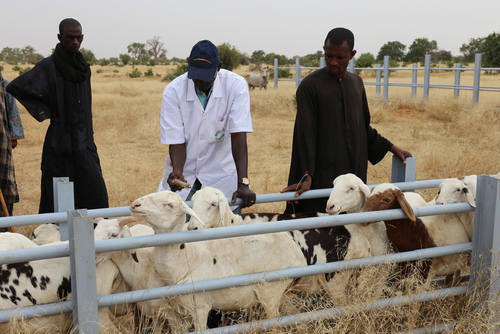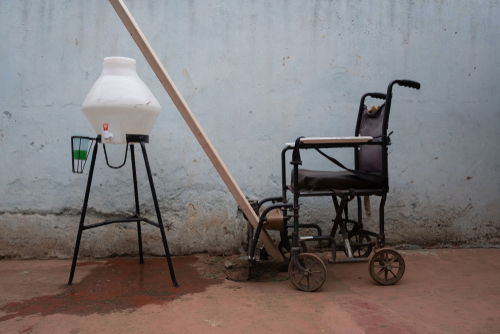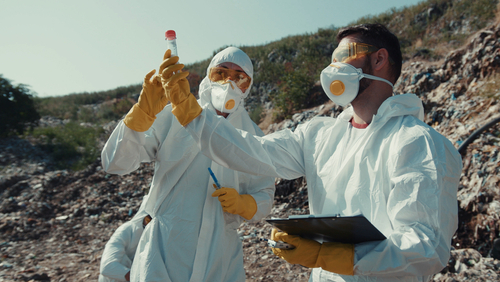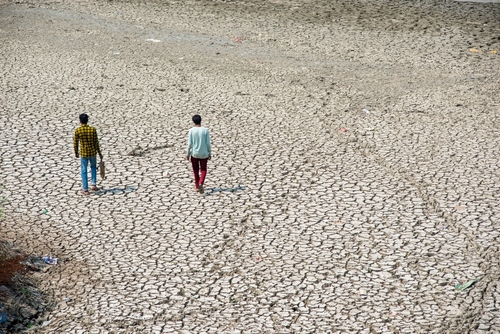September 11, 2023

Prioritizing zoonotic diseases in India requires strengthened cross-sectoral collaboration.
A new paper co-authored by One Health Trust’s Aditi Sriram applies a political prioritization framework to understand zoonotic disease prioritization in India. Interviews with key informants revealed that rather than using nationally ratified disease prioritization guidelines, state governments must determine disease priorities based on community needs. National- and state-level informants generally concurred that zoonotic prioritization is largely sectorally driven and that human and animal health sectors may each view a zoonosis with varying levels of importance. Other interviewees noted that while some organizations may wish to collaborate with other sectors, overstretched staff, and limited resources prevent joint prioritization of diseases. Communication across sectors and a strengthened science-policy interface are required to ensure logical prioritization of zoonotic diseases in India. [Frontiers in Public Health]
Antimicrobial resistance, our pets, and us
In a guest blog for One Health Trust, Certified Veterinary Technician and OHT intern Daryl Makosky discusses how humans and animals can share antimicrobial–resistant (AMR) bacteria and the implications for human and animal health, and the global fight against AMR. She shares the case of an immunocompromised child with cancer who developed life-threatening antibiotic–resistant pneumonia caused by bacteria transmitted from her pet dogs and the history of one of her former patients, a dog euthanized because of an impossible-to-treat urinary tract infection. [One Health Trust]
Drivers of antibiotic prescriptions in rural China
Researchers investigated antibiotic prescribing and dispensing trends, the prevalence of community antibiotic resistance, and the drivers of antibiotic use for common infections in rural health facilities in Anhui Province, China. Using a mixed-methods approach, they found that more than 80 percent of participating patients diagnosed with urinary tract infections or respiratory tract infections (RTIs) at four rural sites were prescribed antibiotics; nearly half of these patients received intravenous antibiotics. Antibiotic prescribing for RTIs was correlated with a longer duration of infection (OR = 3.33) and the presence of sore throat (OR = 1.64), but not the presence of bacterial pathogens. Fever strongly predicted the prescription of intravenous antibiotics (OR = 2.87). More than half of physicians interviewed at participating facilities reported diagnostic uncertainty as a key driver of antibiotic prescribing, as well as the common perception of antibiotics as “anti-inflammatory” among patients. [PLOS Global Public Health]
Poor infection prevention and control practices are increasing the prevalence of a WHO-priority pathogen in India.
Researchers conducted a systematic review and meta-analysis of cross-sectional studies to estimate the pooled prevalence of a WHO-classified Priority 2 Pathogen, vancomycin-resistant Enterococci (VRE), in India between 2000 and 2022. Enterococci faecium species were more prevalent than E. faecalis (58.15 and 36.41 percent, respectively) among the VRE isolates. The overall prevalence of VRE in India in the study period was 12.4 percent, increasing nearly three-fold between 2000 and 2010. Factors including but not limited to insufficient handwashing among healthcare workers are suggested to have contributed to the uptick in VRE cases in India. [Antimicrobial Resistance & Infection Control]
Combined malaria vaccination and chemoprevention provide children with maximal protection from malaria infection.
A randomized, controlled, phase 3 trial was carried out in Mali and Burkina Faso to assess whether the protective effect of combining seasonal vaccination with the RTS,S/AS01E malaria vaccine, and seasonal malaria chemoprevention (SMC) could be sustained for two years after the initial three-year study period. Analysis showed that participants who received combined preventive methods had greater protection from malaria infection than those who received SMC alone (protective efficacy: 47.5 percent in year 4 and 46.8 percent in year 5) and those who received RTS,S/AS01E alone (protective efficacy: 54.3 percent in year 4; 64.4 percent in year 5). The estimated number of total cases averted per 1,000 children in the combined group was 876 relative to the SMC-alone group and 1,015 relative to the vaccine-only group, indicating the utility of combining malaria prevention methods to mitigate the burden of malaria among children under five in high-transmission countries. [The Lancet Infectious Diseases]
Strategies to thwart resistance to a novel anti-gonorrhea antibiotic
Researchers analyzed the effects of different introduction strategies for a new anti-gonorrhea antibiotic on resistance among men who have sex with men in the United States. Using a compartmental gonorrhea transmission model, they assessed four strategies: 1) random 50-50 allocation of drug A (an existing antibiotic) and the novel antibiotic; 2) combination therapy; 3) introduction of the antibiotic when the prevalence of resistance reaches 5 percent; and 4) gradual switch from drug A to the antibiotic until 50-50 allocation is reached. The analysis revealed that continued monotherapy with drug A, a ceftriaxone-like antibiotic, would result in a 5 percent prevalence of resistance in the study population within 6.5 years. Deploying the novel antibiotic under strategy #2, combination therapy would maximize the time until 5 percent resistance was reached in the population with a time to loss (TL) of 19.9 years. [The Lancet Microbe]
Nearly 75 percent of all antibiotics present in animal feed enter the environmental domain.
A review article used newly accessible data to examine the effect, regulation, and fate of antibiotics in environmental domains and associated mitigation strategies. Estimates from scientific literature show that approximately three-fourths of antibiotics administered through livestock feed enter the environment through metabolic processes, including secretion and excretion, and leaching from unconsumed, treated feed. Once in the soil, antibiotics can disrupt the soil microbial community and lead to resistance in environmental bacteria. Antibiotics used in the aquaculture industry can also impose harmful effects on aqueous ecosystems and downstream consumers. Reducing antibiotic use in livestock and aquaculture will require collaboration among animal and agriculture stakeholders, policymakers, and farming communities. [Environmental Advances]
Treatment with manure compost increases the number of antibiotic-resistant bacteria in farm soil.
Researchers analyzed the abundance of antibiotic-resistant bacteria (ARB) and the overall bacterial diversity of cattle farm soil treated with animal manure compost on a farm in New South Wales, Australia. While compost treatment did not affect the bacterial alpha diversity or the richness or evenness of species present, it significantly increased the beta diversity, or the ratio of regional to local species present, of paddock soil. Compost-treated soils also contained a high number of isolates resistant to ampicillin (1.4 x 105 CFU/g soil), trimethoprim (1.4 x 105 CFU/g soil), monensin (1.3 x 105 CFU/g soil), and ciprofloxacin (1.3 x 105 CFU/g soil). Notably, the control soil contained relatively high amounts of isolates resistant to cefotaxime, ampicillin, and monensin. Important questions raised by the findings of this study about the mechanism by which antibiotic resistance is transferred from manure compost to farm soil must be explored in future research to mitigate its harm to animal, human, and environmental health. [Microbiology Open]
Tuberculosis patients in urban Viet Nam need household economic support to reduce disease spread.
A qualitative study of social protections and support for tuberculosis (TB) patients in urban Viet Nam identified several areas to improve treatment outcomes and prevent catastrophic costs. Focus group discussions and key informant interviews of patients and healthcare providers revealed the importance of financial safety nets, including flexible cash transfers for TB treatment. Additionally, psychosocial support and nutritional support would provide encouragement and optimism to TB patients and their families. Viet Nam has one of the highest TB burdens in the world, with 63-98 percent of households with a TB patient experiencing catastrophic economic hardship due to the disease. Estimates indicate that expanding social support and financial safety nets could reduce global TB incidence by up to 76 percent. [BMJ Open]
Excess all-cause mortality in China after ending the zero COVID policy.
China’s zero COVID policy was a proactive strategy of mass testing and strict quarantine measures that minimized incidence and excess mortality due to COVID-19 in the first years of the pandemic. However, China experienced a surge in incidence, hospitalizations, and deaths due to COVID-19 after ending its zero COVID policy. A cohort study analyzing obituary data from three universities and trend analysis data from the most widely used search engine in the country, Baidu, from January 1, 2016, to January 21, 2023, revealed an estimated 1.87 million excess deaths among adults 30 years and older in China during the first two months after the end of the zero COVID policy. [JAMA Network Open]
Better animal-inclusive WASH services are needed to prevent health problems from exposure to animal feces in sub-Saharan Africa.
Human exposure to animal fecal material is associated with intestinal infections, diarrhea, stunted growth, poor cognitive development, and mortality. This is a major public health concern in sub-Saharan Africa, where more than half of the global population growth between now and 2050 is projected to occur. Livestock production is the fastest–growing economic sector, with the largest contribution to average annual fecal biomass increase. A scoping study to evaluate Animal-Inclusive Water, Sanitation, and Hygiene (A–WASH) interventions in the region indicates an increase in these interventions since 2017 but reveals a need for scalability and sustainability of A-WASH interventions to improve environmental and public health outcomes related to human exposure to livestock fecal waste. [BMC Public Health]
Image from Canva











